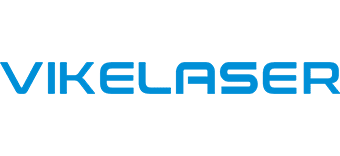Laser Marking In the Medical Device Industry
Laser marking have become a vital tool for carrying out various medical practices. Procedures that once required extended days of hospitalization and recovery can now be done in a matter of hours and often do not require overnight stays.
However, another secondary connection exists between lasers and the field of medicine. Lasers have been used for cutting, welding, and marking various surgical instruments and medical devices. With the ability to work at micron levels these days, lasers are an excellent industrial marking solution when it comes to medical equipment.
Most medical equipment usually goes through a process of chemical passivation, creating a surface film over the equipment that enhances its inherent corrosion resistance, preventing corrosion while also making it less susceptible to germs. One of the major benefits of laser marking technology is that it can mark instruments without causing any harm to the chemical coating. The marked surface retains its corrosion resistance even after being continually used, cleaned, and sterilized for years.
Marking of medical equipment is necessary to ensure that the equipment is easily identified and recalled. It is also important for the safety of the patients. Medical devices and equipment often require long alphanumeric strings to be marked on them. A lot of information, including serial number, date and place of manufacture, etc, is usually marked directly on the equipment. This information can comprise of various letters and numbers, and to place it on instruments that measure the size of a pencil, or sometimes even smaller, is a difficult task. This is where laser marking goes a step beyond other marking technologies. Advanced laser marking machines have the ability to mark codes comprising of more than twenty characters, all in a space less than a single centimeter – such is the level of accuracy that today’s tech has achieved.
There are various other marking technologies available for marking metal articles, including screen printing, inkjet, etc. But most of these technologies are not suitable for medical equipment as they involve various chemical compounds that can prove to be harmful.
On the other hand, lasers can produce extremely accurate and permanent markings on various equipments comprising of metal, plastic, and even on silicon, which was considered to be a material that could not be marked. These benefits have made laser a very popular marking solution when it comes to the medical industry.
Various laser marking machines have been devised to carry out the marking procedures. There are numerous providers of laser marking equipment around the globe, but when it comes to excellent quality, reliability, and great performance, VIKELASER stands out.
